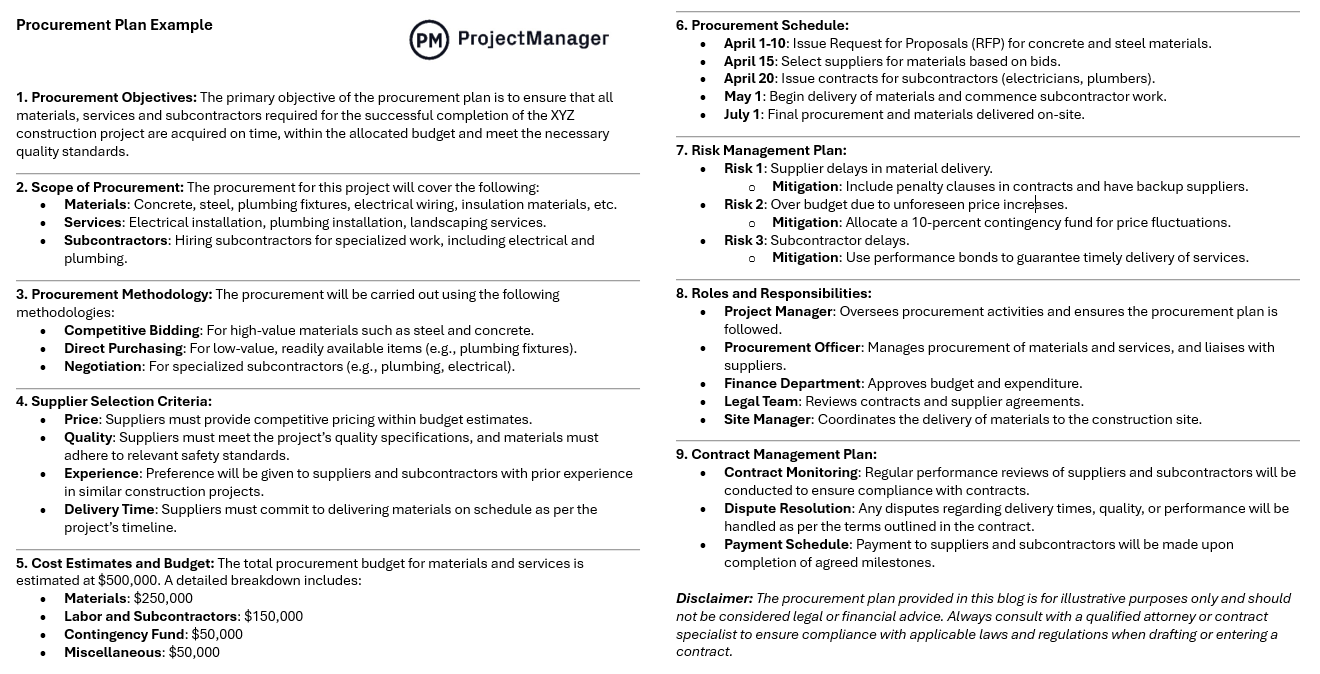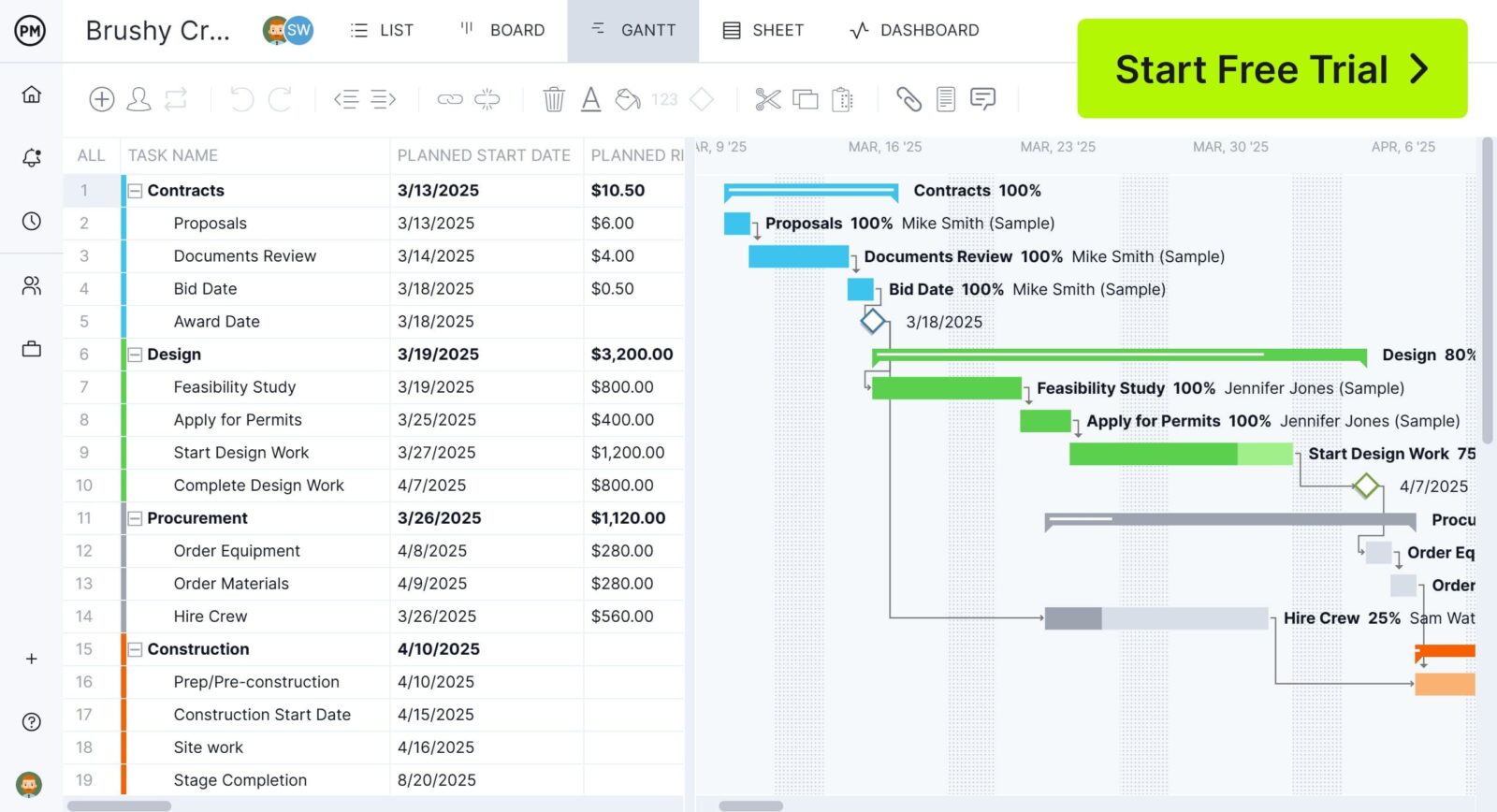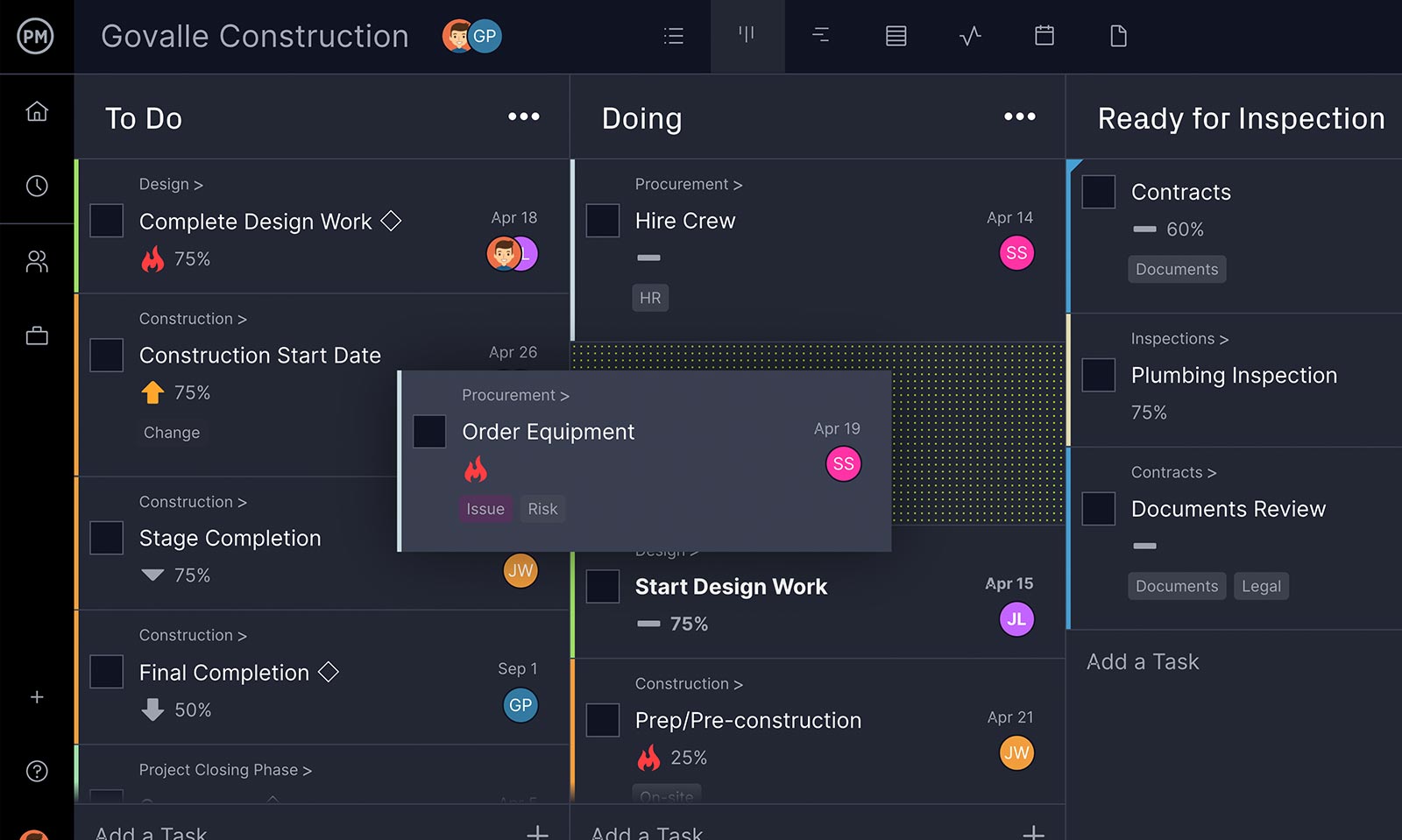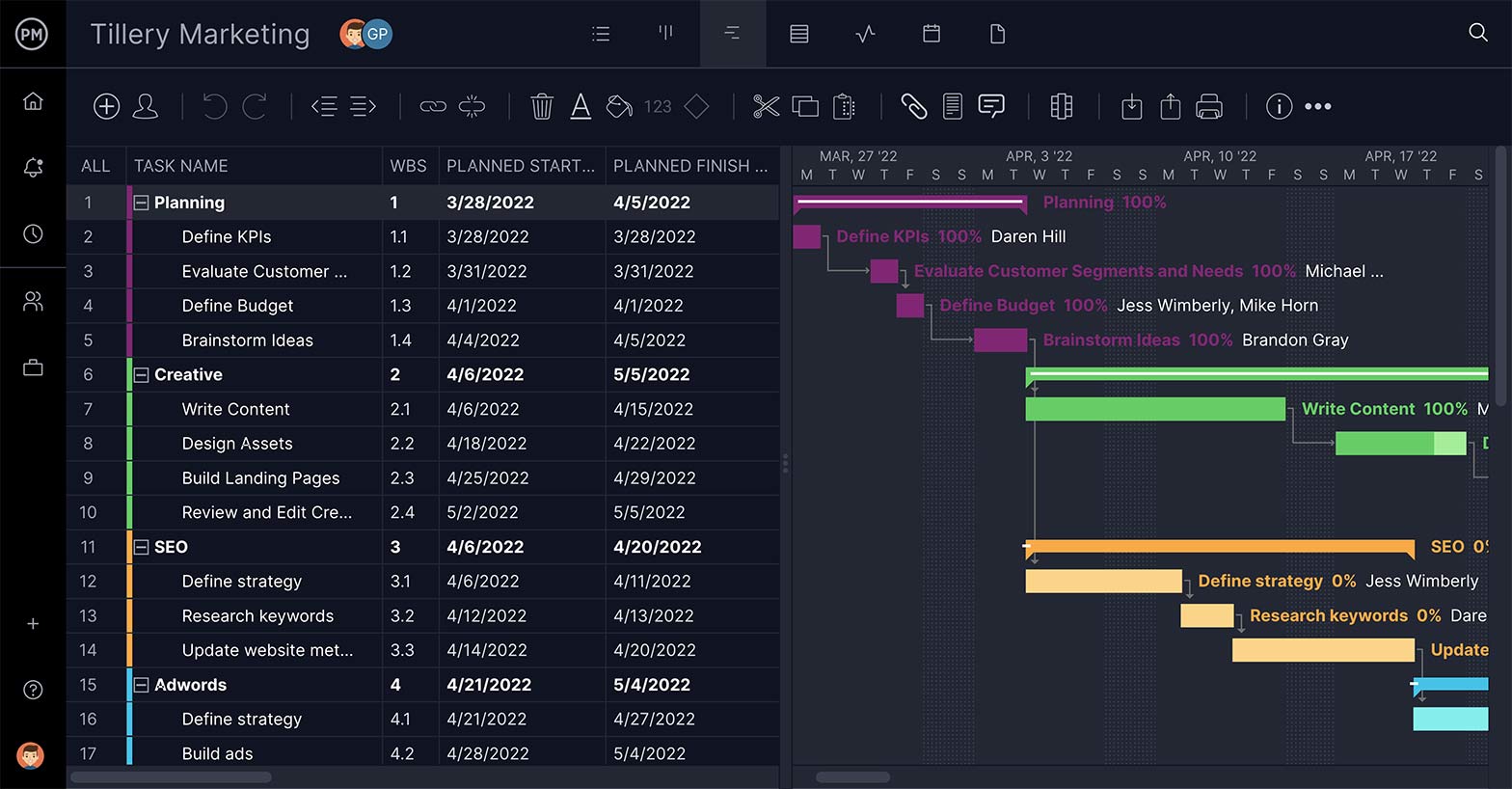Project management planning is made up of many parts. There’s the schedule, the stakeholder matrix, the managing of resources. Speaking of the latter, there’s the matter of how you’re going to procure resources that require vendors of goods and services. That’s procurement management.
The procurement plan is part of the overall project management plan. Over the life cycle of a project there are likely to be many points where it will intersect with vendors. This process needs to be managed. To manage these relationships and keep the flow of those goods and services moving without interruption requires a procurement management plan.
If it seems like we’re going too fast, it’s because we are. The act of procurement, its management and planning are all deeply embedded in the methodology of project management. Let’s slow down and take a moment to unpack these terms.
What Is a Procurement Plan?
A procurement plan, also known as a procurement management plan, is a document that outlines the process of finding and selecting vendors for goods or services required by an organization. It serves as a blueprint for the entire project procurement process, detailing how products or services will be acquired and how vendors will be managed during a project.

Get your free
Procurement Plan Example
Use this free Procurement Plan Example for Word to manage your projects better.
The primary goals of a procurement plan are to increase efficiency, effectiveness and transparency of the procurement process. It also justifies the need for external suppliers and describes the steps for identifying and selecting vendors. Finally, the procurement plan outline contract types, delivery schedules and performance metrics.
When to Make a Procurement Plan
A procurement plan should be made at the initiation phase of a project or before the start of any procurement activities. Typically, it is developed during the project planning phase to outline the procurement process and ensure that everything needed for the project is acquired on time and within budget. Here are key times to create a procurement plan.
- At the Start of a Project: Before executing any procurement activities, having a procurement plan helps identify what goods, services, or works need to be acquired, the timing, and the procurement method.
- When Budgeting for a Project: Having a procurement plan helps ensure that the costs of the procurement are included in the overall project budget.
- When Scaling Up or Expanding: If you’re expanding a project or business and need additional resources, a procurement plan helps you strategically manage increased needs.
- When Introducing New Suppliers or Contracts: A procurement plan helps establish a clear process for introducing new suppliers, contractors, or partnerships, ensuring alignment with project goals.
- When Contracting With Vendors: If you’re negotiating long-term contracts or one-time purchases, it’s important to have a procurement plan that ensures consistency, compliance, and strategic sourcing.
- For Risk Management: It helps identify procurement risks and prepares mitigation strategies, ensuring smooth delivery of the required materials or services.
- Before Project Execution: Before any procurement activities are launched, the plan must be in place to ensure you’re procuring the right materials and services at the right time.
Overall, a procurement plan is best developed early in the process to guide purchasing decisions and ensure successful project completion. However, a procurement plan is only one of many tools that project managers need to oversee procurement and manage the costs related to project resources. The best tool to manage these and other areas or projects is a project management software like ProjectManager.
ProjectManager is an award-winning project management solution equipped with multiple project management views to plan, schedule and track projects from start to finish such as Gantt charts, project dashboards, timesheets, workload management charts and many other features designed to schedule work, allocate resources, make budgets and track costs, which greatly helps with project procurement management. Get started with ProjectManager today for free.

Who Makes the Procurement Plan
A procurement plan is typically made by the procurement team, project managers or supply chain managers, depending on the organization’s structure and the complexity of the procurement needs. The key stakeholders involved in creating a procurement plan include the following.
- Procurement Officer/Manager: Responsible for overseeing the entire procurement process, ensuring compliance with policies and managing supplier relationships.
- Project Manager: Ensures that procurement aligns with project timelines, budget and deliverables.
- Finance Team: Helps in budgeting, cost analysis and ensuring financial approvals for procurement activities.
- Department Heads/End Users: Those who need the goods or services provide input on specifications and quality requirements.
- Legal and Compliance Teams: Ensures that procurement follows legal and regulatory requirements, including contracts and supplier agreements.
- Supply Chain or Logistics Team: Assists in managing the delivery, transportation, and inventory aspects of procurement.
- Executive Management (For Large Projects): Provides strategic direction, approvals and ensures procurement aligns with organizational goals.
The procurement plan is usually developed collaboratively, with the procurement manager leading the process while gathering input from various stakeholders to ensure smooth execution.
What Should Be Included in a Procurement Plan?
A procurement plan is a strategic document used to guide the acquisition of goods, services or works required for a project. It outlines the process, methodologies and goals of procurement to ensure timely, cost-effective and quality purchases. Here’s what should be included in a procurement plan.
Procurement Objectives
The procurement objectives define the goals of the procurement process, such as securing the required resources on time, within budget and according to quality standards. These objectives help align procurement with the overall project or organizational goals.
Scope of Procurement
The scope of procurement outlines what will be procured, including the types of goods, services or works. It details the specifications, quantities and the expected deliverables, ensuring a clear understanding of what is to be acquired.
Procurement Methodology
The procurement methodology describes the approach to acquiring goods and services, such as competitive bidding, direct purchasing or sole sourcing. It ensures the process is fair, transparent, and meets organizational standards and legal requirements.
Supplier Selection Criteria
Supplier selection criteria set the standards for evaluating potential suppliers or vendors. It may include factors like cost, quality, experience, delivery time and reputation. This ensures that the best-suited suppliers are chosen based on predefined requirements.
Cost Estimates and Budget
Cost estimates and budget provide an overview of the expected costs for the procurement process. This includes estimating the cost of materials, labor and overheads, helping to ensure procurement stays within the allocated budget.
Procurement Schedule
A procurement schedule outlines the timeline for the procurement process, including key milestones such as issuing tenders, receiving bids and finalizing contracts. It ensures that procurement activities are completed on time, keeping the project on track.
Risk Management Plan
The risk management plan identifies potential risks in the procurement process (such as supplier delays or cost overruns) and outlines strategies to mitigate them. This helps ensure smooth procurement and prevents disruptions.
Roles and Responsibilities
Roles and responsibilities define who is responsible for each aspect of the procurement process. It ensures clear accountability, coordination, and communication between stakeholders involved in procurement, such as project managers, procurement officers and legal teams.
Contract Management Plan
The contract management plan details how contracts will be managed, monitored, and enforced throughout the procurement process. This includes performance evaluations, dispute resolution processes and ensuring that suppliers meet contractual obligations.
Project Budget Template
This free project budget template allows you to estimate all the costs related to resources such as labor, equipment and any capital assets that you might need to procure for your organization. Making a budget is a very important of a procurement plan as it defines clear limits for spending.
We’ve created over 100 project management templates for Excel, Word and Google Sheets that can help with all areas of project management and can be used in conjunction with this project budget template to manage the procurement activities of an organization.
How ProjectManager Helps Manage a Procurement Plan
Each procurement is a project or a subset of the larger project. Therefore, each procurement can be planned, tracked and reported on just as you would the larger project. ProjectManager is an online project management software that can make that process easy and effective. Procurement management can feel overwhelming. ProjectManager helps with executing your procurement plan with its kanban boards, Gantt charts, dashboards and other project management features.
Using Kanban for Procurement Management
By making each supplier a project on a kanban board, you can then track what stage their inventory is in and not get any unpleasant surprises. ProjectManager has customizable columns, so you can name them ordered, shipped, stocked and need to reorder. This way you’re always on top of your resources. Plus, you can add tags and priority levels to make sure everything is well-organized and tracked.
Gantt Can Link Tasks and Make Timelines
Sometimes procurement is dependent on other tasks. Maybe the visual kanban doesn’t give you the control you need. No problem, switch over to the Gantt view. Now you can link dependencies and see timelines. Timing is important of course. If your resource isn’t here on time, then the whole project can be delayed!
They say, “Don’t put all your eggs in one basket.” But in project management software you want to have all your tools in one place. ProjectManager keeps you organized, so you can work better.
ProjectManager is a cloud-based project management software that helps control procurement throughout the project phases. Workload and resource management features keep track of supplies and calculate planned versus actual costs. ProjectManager assists project managers with planning, monitoring and reporting projects. Team members get a collaborative platform to work together more productively. Try it today with this free 30-day trial.
The post How to Make a Procurement Plan (Example Included) appeared first on ProjectManager.








